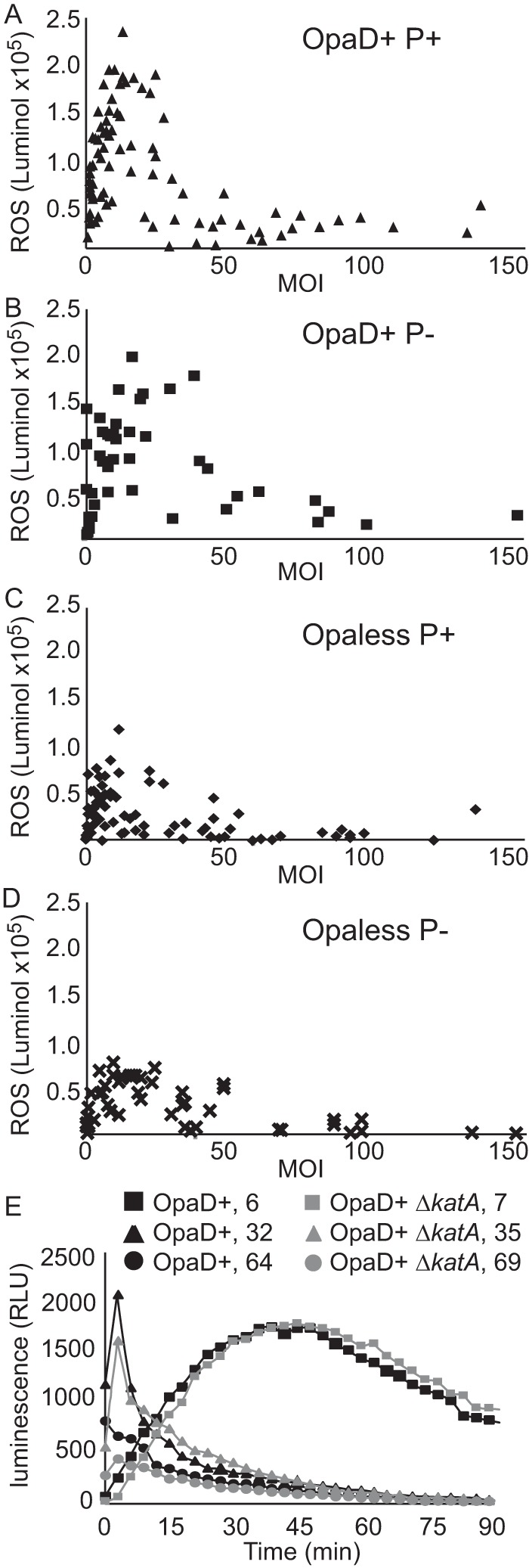FIG 4 .

Gonococcal induction and suppression of the PMN oxidative burst are MOI dependent. Primary human PMNs were infected with gonococci in the presence of luminol, and luminescence increases were monitored over the course of 90 min. The area under the curve was calculated, and the value was plotted against the MOI. (A to D) PMNs were infected with OpaD+ P+ (A), OpaD+ P− (B), Opaless P+ (C), and Opaless P− (D) gonococci, at MOIs ranging from 1 to 150. Data are cumulative from 9 to 12 different experiments using PMNs isolated from one of seven different donors. (E) Gonococcal suppression of PMN oxidative burst is not due to catalase activity. The curves show the accumulation of LDCL by PMNs infected with OpaD+ P+ gonococci (black curves) compared to infections with a ΔkatA mutant (gray curves). Data are one representative set of data from at least 3 independent experiments, with PMNs from 3 individual donors.
